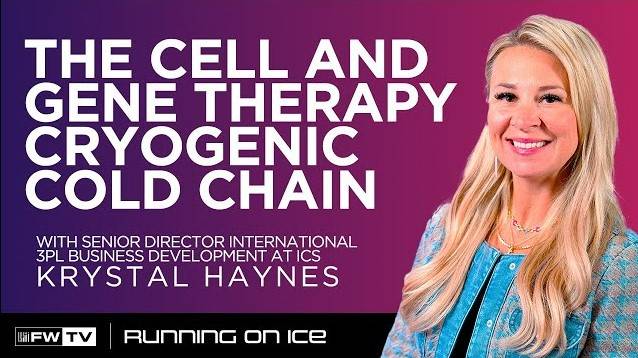Tre måter Tittelmodell driver farmasøytisk innovasjon på
Whether helping to streamline an increasingly complex distribution system, reallocate resources to focus on research and discovery or enable successful commercialization, Title Model programs are becoming a favorable go-to-market strategy that can help fuel future growth.
Below are three unique aspects to consider when evaluating a Title Model and a Title Model partner.
Title Model technology = enhanced visibility and control
Some 3PL providers are leveraging existing or hybrid systems to support Title Model clients, blurring the lines between manufacturer-owned inventory that is in the 3PL environment versus inventory that has transferred to Title. However, forward-thinking providers are implementing proven systems designed specifically for Title Model, which actually enhances supply chain visibility, enabling manufacturers to improve decision making and operational efficiencies. These current technologies leverage two separate Enterprise Resource Planning (ERP) systems, so there is a defined division between 3PL (manufacturer owned inventory) and Title (sold inventory now owned by the 3PL). A segregated system not only allows for immediate transparency around inventory, it also enables financial clarity and allows the manufacturer to track sold inventory in real time. In addition, once the product has acquired a history of sell-through data (typically after six months), manufacturers can recognize revenue as soon as a product has been sold to the title model 3PL partner. Today’s Title Model technology illustrates that two systems are better than one.
Within the theme of visibility there’s also the need for manufacturers to retain ownership of the customer relationship. For this reason, manufacturers should select a Title Model that ensures the manufacturer will be able to oversee sales and marketing, and subsequently remain in control of customer relationships.
Title Model structure = more bandwidth to meet business goals
Going-to-market using in-house resources can require significant operational infrastructure and expertise, especially for manufacturers new to commercialization. This means more personnel, overhead and risk, as well as the additional time it takes to manage all of these elements. Title Model transfers all these pain points to the title support team, leaving the manufacturer to focus on research and development or maximizing product access for current drugs. While the footprint savings vary, a manufacturer in a Title Model can expect some level of staffing avoidance. After all, there’s no reason for the manufacturer to staff accounts receivable personnel or hire someone to manage orders on a regular basis. Even the efficiencies a Title Model lends with regards to inventory management can help reduce the need for manpower. In a Title Model, there is just one invoice and one payer (the 3PL), which means manufacturers can support a team that is 100 percent focused on meeting the most critical business objectives.
Title Model 3PL partner experience = long-term success
Much like the first benefit related to segregated technology systems, manufacturers will do well to select a 3PL Title Model partner that can demonstrate a history of guiding manufacturers through a supply chain strategy that integrates with their commercialization plan. It’s important that manufacturers realize the advantages and disadvantages of each option, whether a temporary Title Model (sometimes referred to as an accelerated Title Model), a long-term Title Model or a traditional 3PL model. Manufacturers should expect a Title Model partner to serve as both a collaborator and a consultant, working with the manufacturer’s leadership team to help define inventory levels, advise on speed of replenishment, and evaluate as well as recommend the best long-term strategy for optimum product access. If it is determined that a traditional 3PL model is the most effective long-term solution, manufacturers will want a 3PL Title Model partner with a proven history of successfully transitioning clients from Title Model to 3PL. Transitioning models is where many 3PL Title Model partners fall short. There are a multitude of factors to consider before transitioning; understanding cut off dates, ensuring reconciliation takes place, that payments are switched to the appropriate Electronic Data Interchange (EDI) lockbox — all while making certain orders don’t get lost in transition. In essence, the transition to 3PL should be treated as if it were the second launch and manufacturers need an experienced partner who can help them through that process.
For some manufacturers, Title Model is the key that opens the door to commercialization success, accelerating a launch date by months, or even up to a year. For others, a Title Model can help serve as a catalyst for pharmaceutical advancement, a means to expansion, or simply a system to gain more control over the supply chain. The manufacturer can then decide how best to apply the additional time and resources gleaned from using a Title Model. In this regard, the most important decision a manufacturer will make is selecting the right 3PL Title Model partner.



